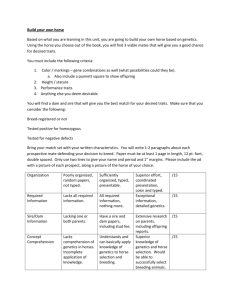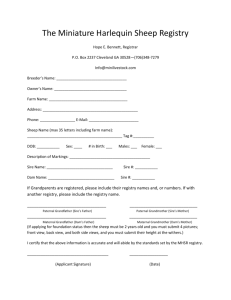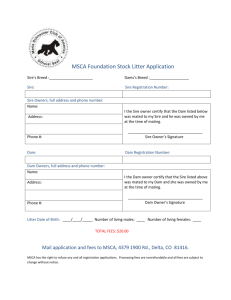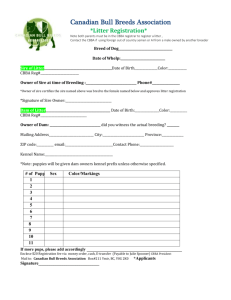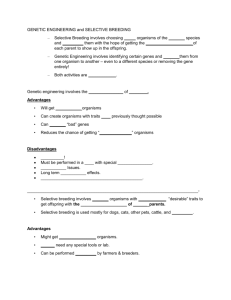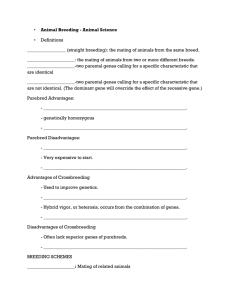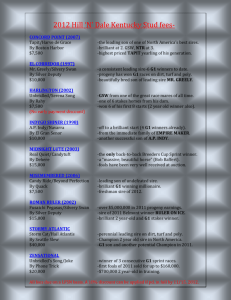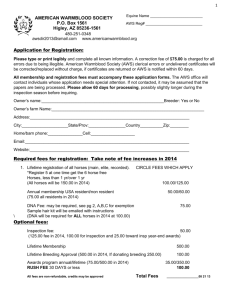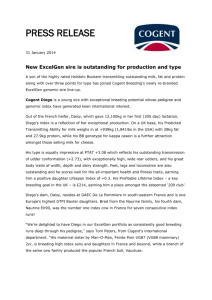Objective Questions for GPSC Exam, Gujarat (For Veterinary GPSC
advertisement
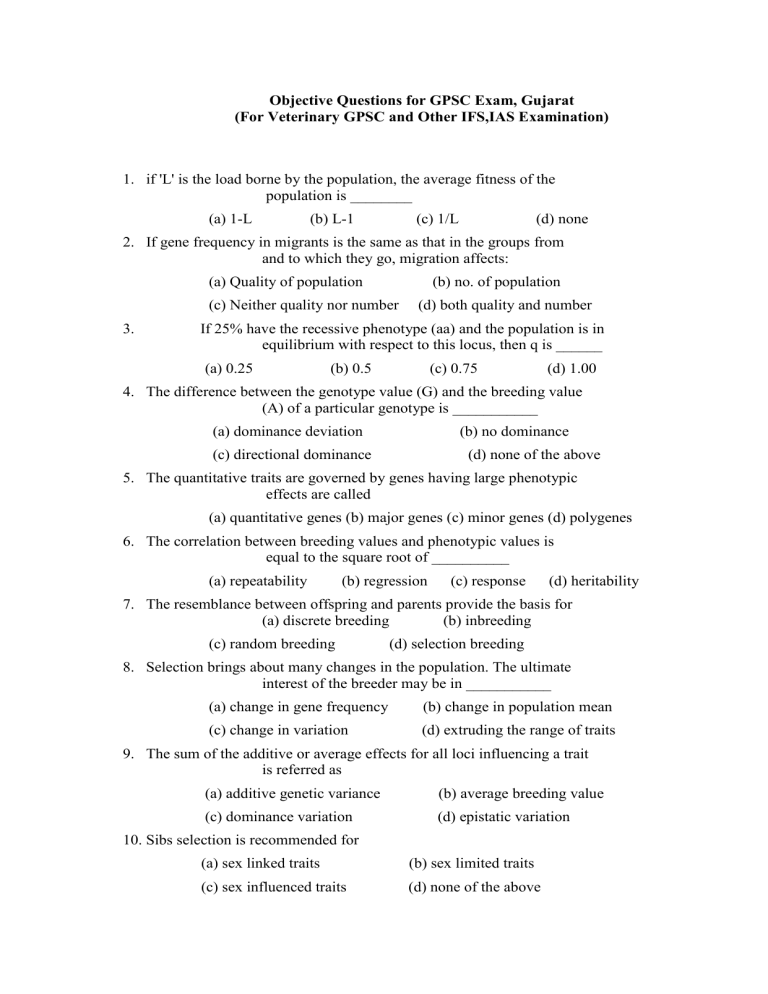
Objective Questions for GPSC Exam, Gujarat (For Veterinary GPSC and Other IFS,IAS Examination) 1. if 'L' is the load borne by the population, the average fitness of the population is ________ (a) 1-L (b) L-1 (c) 1/L (d) none 2. If gene frequency in migrants is the same as that in the groups from and to which they go, migration affects: (a) Quality of population (b) no. of population (c) Neither quality nor number 3. (d) both quality and number If 25% have the recessive phenotype (aa) and the population is in equilibrium with respect to this locus, then q is ______ (a) 0.25 (b) 0.5 (c) 0.75 (d) 1.00 4. The difference between the genotype value (G) and the breeding value (A) of a particular genotype is ___________ (a) dominance deviation (b) no dominance (c) directional dominance (d) none of the above 5. The quantitative traits are governed by genes having large phenotypic effects are called (a) quantitative genes (b) major genes (c) minor genes (d) polygenes 6. The correlation between breeding values and phenotypic values is equal to the square root of __________ (a) repeatability (b) regression (c) response (d) heritability 7. The resemblance between offspring and parents provide the basis for (a) discrete breeding (b) inbreeding (c) random breeding (d) selection breeding 8. Selection brings about many changes in the population. The ultimate interest of the breeder may be in ___________ (a) change in gene frequency (b) change in population mean (c) change in variation (d) extruding the range of traits 9. The sum of the additive or average effects for all loci influencing a trait is referred as (a) additive genetic variance (b) average breeding value (c) dominance variation (d) epistatic variation 10. Sibs selection is recommended for (a) sex linked traits (b) sex limited traits (c) sex influenced traits (d) none of the above 11. The first progeny testing scheme was launched in India during first five year plan at: (a) Hissar (b) Karnal (c) Ludhiana (d) Anand 12. The BLUP method for sire evaluation was suggested by __________ (a) Lush (b) Henderson (c) S. Wright (d) Fischer 13. Nili-Ravi breed of buffalo is formed in (a) Punjab (b) Maharashtra (c) UP (d) Gujarat 14. Project directorate on cattle was established in ________ (a) 1990 (b) 1985 (c) 1987 (d) 1986 15. Equal parent index (EPI) is an expression of: daughter production (a) higher than sire and dam production (b) lower than sire and dam production (c) half way between sire and dam production (d) equal to sire and dam production 16. Variation without natural discontinuities is called continuous variation and character that exhibit it are called (a) metric character (c) neutral character (b) correlated character (d) balanced character 17. The precision of heritability estimate is known by the __________ (a) standard error (b) magnitude (c) method of estimation (d) experimental design 18. The description of the covariance, applicable to any sort of relationship is (a) between half and full sibs (b) between offspring and mid parent (c) between offspring and one parent (d) all the above 19. Sire intra-class correlation (t) is _______ times of h2 variance (a) 1/2 (b) 1/4 (c) 1 time (d) none above 20. Disruptive process change gene frequency in a manner predictable in _______ (a) amount only (b) direction only (c) both (d) none

